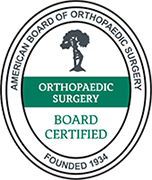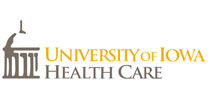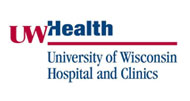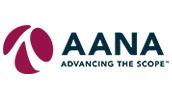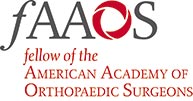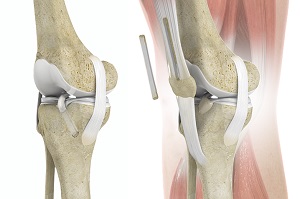
What is Quadriceps Tendon Autograft for Anterior Cruciate Ligament Reconstruction?
Anterior cruciate ligament reconstruction using a quadriceps tendon autograft is a surgical procedure performed to replace a torn or damaged anterior cruciate ligament (ACL) of the knee with a part of the quadriceps tendon taken from your leg (autograft) to restore strength, stability, and function of the knee.
Tendons are bands of tough fibrous connective tissue that attach muscles to bones. Quadriceps tendon, located in the front of the thigh, attaches the quadriceps muscles to the patella (kneecap) and are responsible for straightening or extending the knee as well as flexing the hip.
An ACL injury most commonly occurs during sports activities that involve twisting or overextension of your knee. An ACL can be injured in several ways:
- Sudden directional change or slowing down
- Pivoting or twisting while your foot is firmly planted
- Landing from a jump incorrectly
- Suddenly stopping
- Direct blow to the side of your knee, such as during a football tackle
Anatomy of the Anterior Cruciate Ligament
Anterior cruciate ligament is one of the major stabilizing ligaments in the knee. It is a strong rope-like structure located in the center of the knee, running from the femur to the tibia. The ACL is one of the four major ligaments of the knee that connects the femur (thighbone) to the tibia (shinbone) and helps stabilize your knee joint. It prevents excessive forward movement of the lower leg bone (tibia) in relation to the thighbone (femur) as well as limits rotational movements of the knee. When this ligament tears, unfortunately, it does not heal on its own, and often leads to a feeling of instability in the knee warranting an ACL reconstruction.
Indications for Quadriceps Tendon Autograft for Anterior Cruciate Ligament Reconstruction
Quadriceps tendon autograft is indicated for ACL reconstruction due to its several advantages over other traditional autografts such as patellar and hamstring tendons. These advantages over other grafts include:
- Twenty percent more collagen fibrils per cross-sectional area
- Anatomically and biomechanically has more volume, strength, and thickness
- Cross-sectional area and length can be tailored to a patient’s need
- Customizable for both revision and primary surgeries
- No significant palpable defect, numbness, or pain in the harvest site
- Very low graft failure rate
- Minimal harvest site morbidity
- Excellent clinical outcome
Preparation for Quadriceps Tendon Autograft for Anterior Cruciate Ligament Reconstruction
Pre-procedure preparation for anterior cruciate ligament reconstruction with quadriceps tendon autograft will involve the following steps:
- A thorough examination by your doctor is performed to check for any medical issues that need to be addressed prior to surgery.
- Depending on your medical history, social history, and age, you may need to undergo tests such as blood work and imaging to help detect any abnormalities that could threaten the safety of the procedure.
- You will be asked if you have allergies to medications, anesthesia, or latex.
- You should inform your doctor of any medications, vitamins, or supplements that you are taking.
- You should refrain from medications or supplements such as blood thinners, aspirin, or anti-inflammatory medicines for 1 to 2 weeks prior to surgery.
- You should refrain from alcohol or tobacco at least a week before and 2 weeks after surgery.
- You should not consume any solids or liquids at least 8 hours prior to surgery.
- Arrange for someone to drive you home as you will not be able to drive yourself after surgery.
- A written consent will be obtained from you after the surgical procedure has been explained in detail.
Procedure for Quadriceps Tendon Autograft for Anterior Cruciate Ligament Reconstruction
The procedure is most often performed arthroscopically under general anesthesia.
Your surgeon will make two small incisions about 1/4-inch-long around your knee. An arthroscope, a tube with a small video camera on the end is inserted through one incision to view the inside of the knee joint. Along with the arthroscope, a sterile solution is pumped into the joint to expand it, providing your surgeon with a clear view and space to work inside the joint.
The torn ACL will be removed and the pathway for the new ACL is prepared. Your surgeon then makes an incision over the quadriceps tendon and removes the middle third of the quadriceps tendon, along with a bone plug from the upper end of the patella to prepare the new graft.
The arthroscope is reinserted into the knee joint through one of the small incisions. Small holes are drilled into the upper and lower leg bones (femur and tibia) where these bones come together at the knee joint. The holes form tunnels in your bone to accept the new graft. The graft is then pulled through these holes. The new tendon is then fixed to the bone with screws to hold it in place while the ligament heals into the bone.
The incisions are then closed with sutures and a dressing is placed.
Postoperative Care and Recovery
In general, postoperative care instructions and recovery after anterior cruciate ligament reconstruction with quadriceps tendon autograft will involve the following steps:
- You will be transferred to the recovery area where your nurse will closely observe you for any allergic/anesthetic reactions and monitor your vital signs as you recover.
- You will usually go home on the same day of the surgery.
- You may experience pain, inflammation, and discomfort in the operated area. Pain and anti-inflammatory medications are provided as needed.
- Application of cold and heat therapy on the operated area is also recommended to reduce inflammation and pain.
- You are encouraged to walk with assistance as frequently as possible to prevent the risk of blood clots.
- You are advised to keep your leg elevated while resting to prevent swelling and pain.
- Keep the surgical site clean and dry. Instructions on surgical site care and bathing will be provided.
- Refrain from smoking as it can negatively affect the healing process.
- Eating a healthy diet rich in vitamin D is strongly advised to promote healing and a faster recovery.
- Refrain from strenuous activities and lifting heavy weights for the first couple of months. Gradual increase in activities over a period of time is recommended.
- An individualized physical therapy protocol is designed to help strengthen your knee muscles and optimize knee function.
- Refrain from driving until you are fully fit and receive your doctor’s consent. Most patients will be able to drive after 6 weeks of surgery.
- You will be able to resume your normal activities in a couple of months; however, return to competitive sports may take 6 months to a year.
- A periodic follow-up appointment will be scheduled to monitor your progress.
Risks and Complications
Anterior cruciate ligament reconstruction with quadriceps tendon autograft is a relatively safe procedure; however, as with any surgery, some risks and complications may occur, such as:
- Infection
- Blood loss
- Blood clots or deep vein thrombosis
- Anesthetic/allergic reactions
- Neurovascular injury
- Persistent pain in the operated area
- Loosening of the graft
- Failure of the graft
- Crepitus (crackling or grating feeling of the kneecap)
- Decreased range of motion
- Recurrence of injury to the graft

